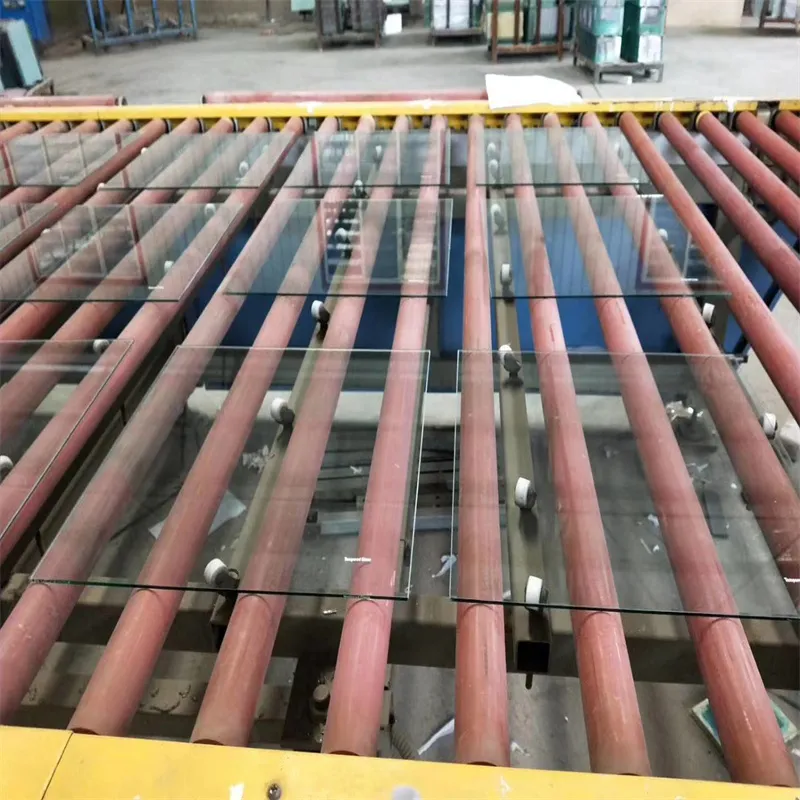Dec . 04, 2024 06:13 Back to list
mirror glass cutting design
The Art and Science of Mirror Glass Cutting Design
Mirror glass cutting design has evolved into a significant craft that combines aesthetic appeal with practical applications. From exquisite home décor to functional applications in commercial spaces, the precision involved in cutting and designing mirror glass defines both its beauty and utility. This article delves into the intricacies of mirror glass cutting design, exploring techniques, trends, and the tools required for creating stunning pieces.
Understanding Mirror Glass
Mirror glass is a flat glass that has been coated with a reflective material, usually a thin layer of silver or aluminum. This reflective coating allows the glass to serve as a mirror while retaining clarity and brightness. The types of mirror glass include regular mirror, antique mirror, and low iron mirror, each offering distinct characteristics that cater to various design needs.
Regular mirrors are common in households and businesses, widely valued for their reflectivity and clarity. Antique mirrors, on the other hand, possess a patina that gives them an aged, vintage appearance, ideal for creating atmospheres filled with nostalgia. Low iron mirror glass provides higher transparency and a truer reflection, making it a popular choice for high-end designs.
The Techniques of Mirror Glass Cutting
The process of mirror glass cutting involves several techniques, each requiring precision and skill. The most common method is straight cutting, where a glass cutter scores a line on the mirror’s surface. This is followed by breaking the glass along the scored line, a method that demands steady hands to achieve clean edges.
For designer pieces, intricate shapes and patterns are often desired. Techniques such as curve cutting and beveling enable artisans to create more complex designs. Curve cutting involves gentle scoring along a curved path, while beveling sharpens the edges to create a sloped effect. Both methods add sophistication and a unique touch to the final product.
Tools of the Trade
Successful mirror glass cutting design requires the right tools. A high-quality glass cutter is essential; it typically features a carbide or diamond blade for scoring. Additionally, breaking tools like running pliers and handheld cutters help in achieving clean breaks. For more intricate designs, a CNC (Computer Numerical Control) machine can be incredibly beneficial. This advanced technology allows for precise cutting of complex shapes and patterns, reducing manual error and enhancing efficiency.
mirror glass cutting design

Safety equipment is equally important in this craft. Safety goggles protect against glass shards, while gloves safeguard hands from sharp edges. A well-ventilated workspace is also necessary to mitigate any fumes arising from the reflective coating during the cutting process.
Trends in Mirror Glass Design
In recent years, mirror glass cutting design has seen various trends that reflect contemporary aesthetics. The rise of minimalism in interior design has led to a demand for simple yet striking mirror shapes, such as geometrics and organic forms. These designs often serve dual purposes, acting as focal points in a room while enhancing the sense of space and light.
Another trend is the integration of LED lighting with mirror glass. Backlit mirrors offer a modern flair and practicality, providing illumination while contributing to an open and airy feel. Smart mirrors with embedded technology, capable of displaying information or streaming media, have also gained popularity, marrying functionality with artistic design.
The Future of Mirror Glass Cutting Design
As technology advances, the future of mirror glass cutting design is poised for innovation. Digital design software and automated cutting technology will likely continue to enhance creativity and precision. Artists and designers will increasingly experiment with mixed materials, blending mirror glass with metals and textiles to create unique, multidimensional pieces.
Sustainability is another vital aspect that is shaping the future of mirror glass design. With an increasing number of consumers valuing eco-friendly practices, the demand for recycled and sustainably sourced materials is on the rise. Designers are tasked with finding innovative ways to integrate sustainable practices into traditional mirror glass cutting to appeal to eco-conscious clients.
Conclusion
Mirror glass cutting design is not just a technical process; it is an art form that reflects the creativity and precision of artisans. As techniques evolve and trends shift, the potential for innovation within this field is immense. Whether for personal use or commercial applications, the designs created from mirror glass continue to enrich our environments, making them both functional and beautiful.
-
Safety and Style with Premium Laminated Glass Solutions
NewsJun.24,2025
-
Reinvents Security with Premium Wired Glass
NewsJun.24,2025
-
Premium Float Glass Line for Modern Architecture
NewsJun.24,2025
-
Low Emissivity Glass for Energy-Efficient Architecture
NewsJun.24,2025
-
High-Performance Insulated Glass Solutions for Modern Architecture
NewsJun.24,2025
-
Elevates Interior Style with Premium Silver Mirror
NewsJun.24,2025
Related PRODUCTS














